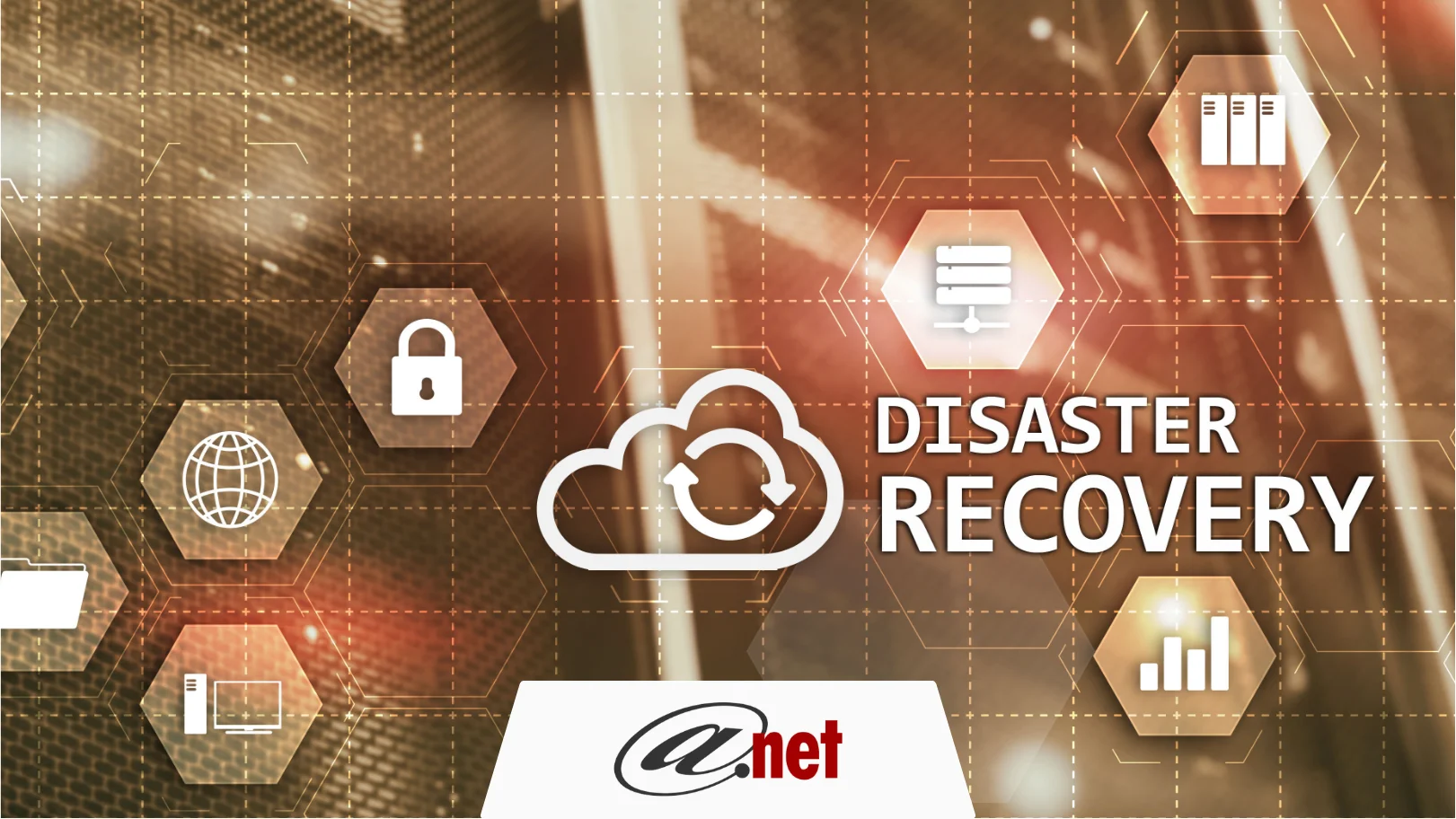
Imagine a scenario where your business operations are humming along smoothly, data flowing freely, and then suddenly, everything stops.
Servers crash, critical data vanishes, and your digital infrastructure becomes inaccessible.
This nightmare scenario is more than just a bad day at the office; it’s a vivid illustration of the catastrophic impact a disaster can have on any business.
In a recent survey, 76% of IT decision-makers reported experiencing severe loss of critical data in the past year, with 45% losing data permanently. This statistic highlights the alarming frequency and severity of data loss incidents, emphasizing the crucial need for effective disaster recovery solutions
| As Jeffrey S. King, President of AT-NET says, “With Cloud DR, businesses transform risk into resilience, safeguarding their future.” |
In this blog, we’ll explore the strategic importance of Cloud Disaster Recovery (Cloud DR) and how it can be the safeguard your business needs to navigate through digital uncertainties and threats.
Understanding Cloud Disaster Recovery
Cloud Disaster Recovery is an approach that utilizes cloud computing resources to protect applications and data from the impact of disasters.
This method offers a compelling alternative to traditional DR strategies by leveraging the cloud’s flexibility, scalability, and cost-effectiveness.
Cloud DR ensures that data backups are stored in a secure, off-site location that can be quickly accessed and restored, enabling businesses to resume operations with minimal downtime.
Research shows that 75% of small businesses have no disaster recovery plan objective in place, and 93% of companies without disaster recovery plans who suffer a major data disaster are out of business within one year.
Facing Cloud Management Complexities?Simplify your cloud operations with comprehensive solutions from AT-NET. |
The Role of Cloud-Based Disaster Recovery
Cloud-based disaster recovery plays a pivotal role in modern DR strategies.
It allows businesses to replicate their physical or virtual servers to a cloud environment, ensuring that copies of critical data and applications are always available outside of the primary business location.
This setup is particularly useful in the face of natural disasters, power outages, or any other incidents that could lead to data loss or significant downtime.
Disaster Recovery in Cloud Computing
The integration of disaster recovery in cloud computing introduces a level of flexibility and efficiency previously unattainable with traditional DR solutions.
Companies can scale their DR needs according to their size and risk exposure without the need for a dedicated facility. Moreover, cloud computing disaster recovery enables businesses to deploy DR strategies that were once only accessible to large enterprises, making robust DR solutions available to businesses of all sizes.
Key Components of a Cloud Disaster Recovery Plan
A comprehensive cloud disaster recovery plan should include several key elements:
- Disaster Recovery Strategies: Identifying the most suitable strategies to ensure business continuity, including the use of virtual machines, cloud storage, and dedicated DR servers.
- Data Backups: Regularly scheduled data backups are essential for minimizing data loss and ensuring quick recovery times.
- Compliance Requirements: Ensuring the DR plan meets all relevant compliance requirements and industry standards.
- Cloud Environment: Choosing the right cloud platform (public cloud, private cloud, or hybrid cloud) to meet the specific needs of the business.
- Service DRaaS: Some businesses may opt for Disaster Recovery as a Service (DRaaS), a cloud service that manages and executes DR plans.
Implementing Cloud Disaster Recovery Solutions
Implementing a cloud disaster recovery solution involves careful planning and execution. Businesses must assess their risk profile, identify critical systems and data, and select a cloud DR provider that can meet their specific requirements.
The goal is to quickly recover from any disaster with minimal impact on operations, ensuring that data is secure and accessible, no matter what happens.
Comparison of Cloud Disaster Recovery Service Models
This table compares three popular service models for Cloud Disaster Recovery: Self-Service, Assisted Recovery, and Disaster Recovery as a Service (DRaaS).
Each model offers different levels of support, cost implications, and control, catering to various business needs and capabilities.
| Feature | Self-Service | Assisted Recovery | DRaaS |
| Level of Control | High | Moderate | Low |
| Setup Complexity | High | Moderate | Low |
| Cost | Lower upfront, higher ongoing | Moderate upfront and ongoing | Higher upfront, lower ongoing |
| Expertise Required | High (in-house or outsourced) | Moderate | Low |
| Recovery Speed | Depends on in-house expertise | Faster than self-service | Fastest |
| Scalability | Flexible, but complex | Moderate flexibility | High scalability |
| Support Level | DIY support resources | Limited support | Full support |
| Suitability | Tech-savvy businesses with IT staff | Businesses with limited IT staff | Businesses seeking comprehensive DR without in-house expertise |
The Benefits of Cloud DR
Cloud DR offers several advantages over traditional disaster recovery models:
Cost Efficiency: Eliminating the need for physical DR sites reduces the overall cost of the disaster recovery plan.
Scalability: The cloud environment can easily scale up or down based on the business’s changing needs.
Quick Recovery: Cloud-based solutions allow for faster recovery times compared to traditional methods.
Flexibility: Businesses can customize their cloud DR solutions to fit their unique requirements.
| More resources you might like: |
Why Cloud Disaster Recovery is Essential

The potential for disaster looms over every business. Still, cloud disaster recovery provides a safety net that can mean the difference between a minor setback and a major business failure.
By leveraging cloud-based DR solutions, companies can ensure business continuity, protect critical data, and maintain operations under even the most challenging circumstances.
| Discover Trusted Cloud Services Near You
|
Struggling to develop a robust cloud disaster recovery strategy? AT-NET’s got your back. With 23 years of experience as a leading IT services and cloud management company, we understand the importance of cloud disaster recovery solutions.
We specialize in crafting tailored DR plans that align with our clients’ unique business needs.
To safeguard your business against the unexpected, contact us for a free consultation. Together, we can build a resilient future for your business.


